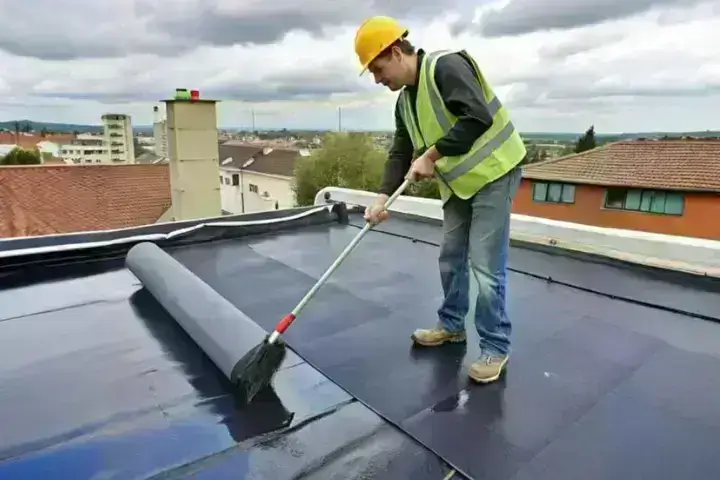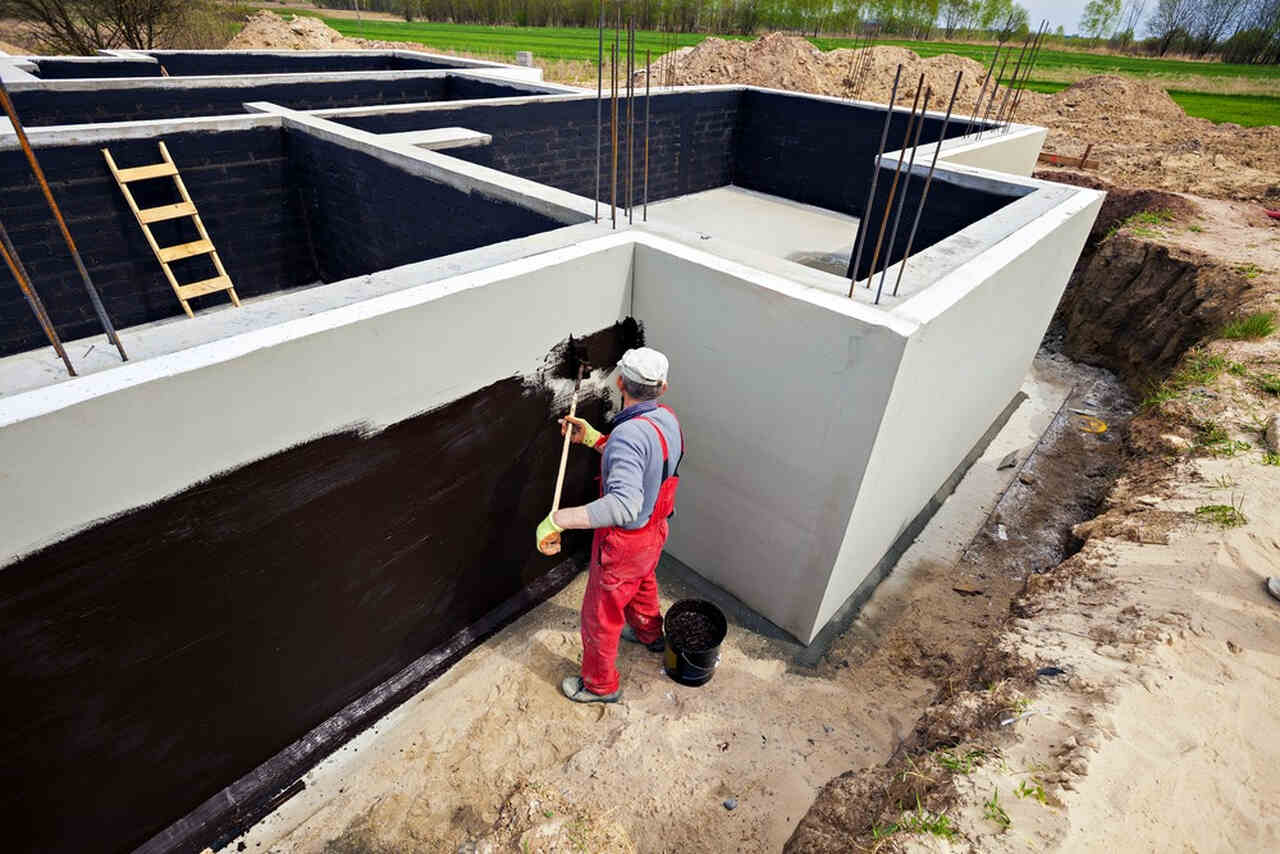Types of Waterproofing: Exploring the Different Methods and Their Applications
Waterproofing is an essential element of construction and upkeep. It safeguards frameworks from the harmful results of water damages. There are a number of methods readily available, each with its distinct applications and advantages. From membrane layer systems to cementitious solutions, comprehending these options is necessary for effective application. The option of waterproofing approach can significantly influence resilience and long life. Checking out these various techniques discloses their distinctive advantages and potential difficulties, motivating further consideration of excellent services.
Membrane Waterproofing Equipments
Membrane layer waterproofing systems work as a vital obstacle against water breach in numerous structures. These systems usually are composed of slim sheets made from materials like rubber, thermoplastic, or asphalt, which are put on surface areas to stop moisture penetration. They can be mounted over or listed below quality and are particularly effective in areas vulnerable to high water direct exposure, such as cellars, roofs, and foundations.The installation process includes cleaning up the substratum, using adhesives or guides, and exactly fitting the membrane layer to assure full insurance coverage. Membrane layer systems can be either totally stuck, mechanically affixed, or laid loose, depending on the specific needs of the task. They supply durability and flexibility, accommodating structural movements without endangering their waterproofing capacities. In addition, these systems can be strengthened with added layers for improved protection. Ultimately, membrane waterproofing systems are essential for securing frameworks against water damage and keeping long-lasting integrity.
Liquid-Applied Waterproofing Coatings
Liquid-applied waterproofing finishings offer a versatile remedy for securing surfaces from water infiltration - Landscape drainage Omaha. These coverings contain fluid materials that, when used, create a smooth, flexible membrane layer. Their adaptability permits application on different substratums, including concrete, metal, and timber. The finishes can be utilized in varied atmospheres, from domestic to commercial settings, making them ideal for roofing systems, structures, and below-grade structures.One substantial benefit of liquid-applied coatings is their capability to comply with irregular shapes and pass through splits, producing a robust obstacle against wetness. They often show outstanding bond properties and resistance to UV radiation, guaranteeing long life and toughness. Additionally, the application process is commonly straightforward, enabling quick installment and reduced labor expenses. This technique additionally minimizes the danger of water pooling, as the continuous layer successfully routes water far from vulnerable areas. Overall, liquid-applied waterproofing coverings are an efficient selection for thorough water protection
Cementitious Waterproofing Solutions

Cementitious waterproofing remedies use a robust choice for structures requiring trusted wetness defense. These systems primarily make use of a blend of concrete, sand, and chemical additives to develop a waterproof obstacle. They are usually related to surface areas such as concrete walls, structures, and floors, offering a long lasting, long-lasting defense versus water intrusion.One of the essential benefits of cementitious waterproofing is its ease of application; it can be used using a brush, roller, or spray, click here to read making it appropriate for numerous project dimensions. Additionally, this approach is suitable with many surface areas and can often be used in combination with other waterproofing techniques.Cementitious remedies are particularly effective in settings where water exposure is a worry, such as cellars or below-grade structures. Their outstanding attachment buildings ensure that they bond well with substratums, giving a solid and impermeable layer against moisture penetration.
Bentonite Waterproofing
Bentonite waterproofing is an extremely reliable approach that makes use of sodium bentonite clay to develop an all-natural barrier against water. This technique makes use of the special buildings of bentonite, which increases upon contact with water, sealing any potential leaks and avoiding wetness infiltration. It is generally used in various applications, including foundation wall surfaces, tunnels, and retaining walls, where water resistance is essential.Bentonite can be applied in several kinds, such as panels or coverings, supplying adaptability in installment. Its capability to self-seal makes it an eye-catching choice for areas subject to shifting soil or fluctuating water degrees. In addition, bentonite waterproofing is environmentally pleasant, as it is an all-natural product that does not present find here hazardous chemicals right into the environments.
Water Drainage and Outside Waterproofing Solutions
Effective waterproofing commonly entails a mix of techniques, including water drainage and exterior systems. Drainage systems, such as French drains and sump pumps, are designed to reroute water visit their website far from structures, lowering hydrostatic stress versus structures. These systems are vital in avoiding water buildup that can cause structural damage and mold growth.External waterproofing, on the various other hand, includes using protective barriers to the structure's outside. Methods such as the installation of water-proof membranes, coverings, or sealers can aid stop water infiltration. This approach not only shields the foundation however likewise enhances the total sturdiness of the structure.Together, drainage and outside waterproofing systems form an extensive service to take care of water efficiently. By applying these methods, homeowner can guard their investments versus the destructive impacts of dampness, ensuring long-term security and safety and security for their buildings.
Regularly Asked Questions
Exactly how Do I Select the Right Waterproofing Technique for My Task?
Picking the right waterproofing method depends on factors such as project type, ecological conditions, budget plan, and preferred durability. Assessing these elements enables notified decisions tailored to specific demands and needs.

Can Waterproofing Be Applied in Cold Weather Issues?
Waterproofing can be used in cold climate problems, but it needs details materials and methods. Cold temperatures may impact curing times and attachment, necessitating careful choice of products created for low-temperature application.
What Are the Usual Signs of Waterproofing Failure?
Typical indicators of waterproofing failure include noticeable water spots, peeling paint, wet smells, mold and mildew growth, and splits in wall surfaces or structures. French drain installation Omaha. These indicators suggest that dampness is passing through the obstacle, endangering its efficiency
For How Long Does Waterproofing Last Before Requiring Upkeep?
The durability of waterproofing varies, normally lasting in between 5 to ten years. Elements such as material quality, ecological problems, and maintenance methods affect its sturdiness, demanding periodic inspections to ensure reliable protection against water invasion.
Exist Eco-Friendly Waterproofing Options Available?
The concern of green waterproofing options exposes an expanding interest in lasting products (French drain installation Omaha). Various natural materials, such as plant-based sealants and recycled products, provide effective services while reducing environmental impact, appealing to ecologically mindful consumers